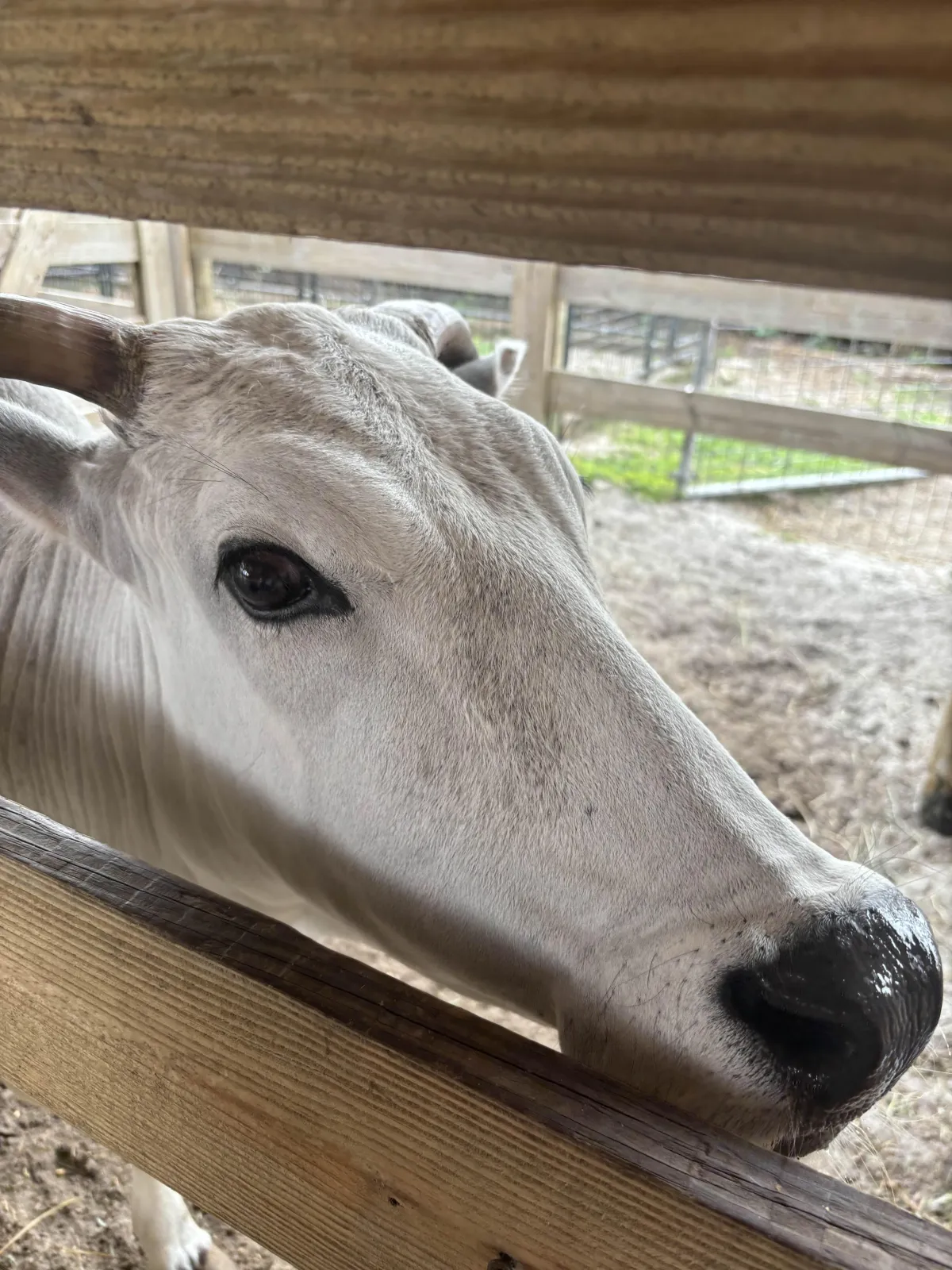

Zebu Cow
by: Darian Borghei
Mimi (Zebu cow): picture
Did you know there are cows that have humps on their backs?
Well there are! They are called Zebu cows.
Overview
Zebu cattle are believed to have originated in the Indian subcontinent thousands of years ago. They were originated in south Asia.
They are usually found in regions with tropical or subtropical weather.
They are usually found in Africa, the Americas, Asia and Australia, they have been able to cross breed them with local breeds in order to help them improve their heart tolerance and disease resistance.
Their natural habitat are environments with tropical grasslands, hot and humid climates and places where they can find shade and water.
Physical description: Zebu cows have a hump on its shoulders almost like a camel hump. It is made up of fatty tissue which varies in size depending on the cow. It is where they store their energy which helps them when they are in environments where food is scarce. They have loose and droopy skin as well as ears that droop along their head. They have a short and fine coat that comes in a variety of colors like black, brown and grey as well as a long swinging tail. They are overall muscular cows that range to be pretty big. Adults are usually 880 to 2200 pounds.
Diet and eating habits: Zebu cows are mostly herbivores which means they mostly eat plant based foods. They consume different kinds of grass, shrubs, woody plants and browse. They also consume leguminous plants like clovers, alfalfa and Leucaena these plants provide the cows with their dietary needs and supplements. They need access to clean water to adjust them to very hot climates and stay hydrated.
Behavior and personality: Zebu cows are very social animals that have a diverse range of personalities to help them survive in different kinds of environments. They are generally docile animals, they rarely get aggressive. Some of the behaviors they tend to do when they get aggressive are head bumping, pushing or displaying threatening postures to show aggression.
Domestication and uses: Zebu cows have been used for many things including dairy production, meat production and work and transport. They transport goods and perform various tasks in the agricultural practices. They are also valued for their milk production, they are well adapted to hot climates and harsh environments. Their meat is very lean and flavorful. Not only are they used for that but they are also used for transportation purposes in rural areas.
Cultural significance: In many cultures Zebu cows play a central role in traditional ceremonies and festivals. In African societies they are exchanged as dowry during marriage ceremonies, and in some South American cultures they are used for celebratory purposes during festivals and celebrations. Since they have such a high cultural and economic significance, they are the focus of the conservation effort aimed at preserving and maintaining biodiversity in agricultural systems.
Economic importance: Zebu cows are responsible for milk and meat production, draft power, drought resistance, livelihoods and employments, and genetic resources. Since these cows are good at adapting to harsh climates they are often used for dairy and meat production in places that have a more hot climate and a harsh environment. They are good at transporting goods and help employees complete tasks when it comes to labor. In many places the economy depends on these cows and their abilities.
Conservation status: They are not considered to be endangered or threatened. However they do face some conservation factors like genetic erosion, habitat loss, and competition from modern livestock breeds. Some stuff that can be done to fix it could be breeding programs, establishment of breed registries, and also raising awareness about the cultural and economic importance.
Takeaway
Zebu cows are known for their fatty hump and their ability to adapt to harsh environments. They are mostly found in Asia and South America due to them being used for transportation and employment in harsher climates of less resources. They are a symbol of fertility, abundance and purity.
